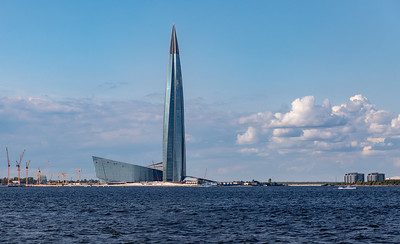By Charlotte Krausz
President Trump's recent imposition of 25 percent tariffs on India for importing Russian oil signals a potential expansion of secondary sanctions to other Russian energy customers. The policy shift threatens to extend punitive measures to post-Soviet states in Central Asia and the South Caucasus that remain heavily dependent on Russian energy infrastructure. While aimed at curtailing Russia's war revenues, such measures could paradoxically drive these strategically important regions closer to Moscow's orbit, undermining years of U.S. and EU engagement in the region.

BACKGROUND: In his statements, Trump has criticized countries that import oil and accused them of funding the “Russian war machine.” By stopping Russia’s revenues from its largely petrostate-based war economy, the U.S. seeks to thwart Russian advances in Ukraine and punish Putin. Yet imposing high tariffs on countries dependent on Russia for their energy supply, especially on post-Soviet states in Central Asia and the South Caucasus, could have far worse ramifications for U.S. and EU aspirations in the region and drive former Soviet republics closer to Russia once more
A key example of this policy shift occurred in the first days of August 2025, when President Trump imposed a 25 percent tariff (later raised to 50 percent) on India for being a major buyer of Russian oil. Randhir Jaiswal, a spokesman for the Foreign Ministry of India, said that “the targeting of India is unjustified and unreasonable.” Given that India buys one-third of its crude oil from Russia, India is unlikely to change course, and the tariffs have badly damaged relations with India. The move is especially surprising given Trump’s past cordial relationship with Modi and the Biden administration's geopolitical courting of India. Biden even hosted Modi for a state dinner in June 2023.
In a recent opinion piece in The Washington Post, Andriy Yermak, Ukraine’s chief of the presidential office, praised the high tariffs on India. Yermak declared that it was a “great first step” but called for more pressure and for a “full economic blockade” of Russia. While Ukraine understandably wants everything possible to be done to end the war and bring peace, not all avenues will lead to the desired outcome. The decision for Europe to get off Russian oil following the full-scale invasion of Ukraine in 2022 was apparent and necessary. And though it led to an increase in energy costs and inflation, alternative energy sources were found, and Russia lost a vital stream of revenue. The expansion of these sanctions, this reasoning goes, will help the war effort and thwart Russia’s imperial ambitions.
But this strategy could be disastrous if poorly applied, especially in Central Asia and the South Caucasus, where countries are still dependent on Russia for energy needs. The energy landscape in Central Asia reflects decades of Soviet-era infrastructure and integration. Central Asian countries, except oil-rich Turkmenistan, remain highly reliant on Russian energy infrastructure and benefit from shared Soviet-era energy grids and the Eurasian Economic Union.
The South Caucasus presents a similar case. Georgia and Armenia, even more so, are largely dependent on Russian oil and have limited energy supply options. Georgia lacks domestic oil refineries and imports primarily from Russia and Azerbaijan, with Russian imports recently surpassing Azerbaijani supplies for the first time in eighteen years despite troubled bilateral relations. Armenia faces even greater constraints, with Gazprom maintaining a monopoly over natural gas imports and distribution. Natural gas made up 80 percent of Armenia’s energy imports in 2020. The rest comes from Iran in an electricity-for-natural trade deal. Armenia’s natural gas imports are delivered through the North-South Gas Pipeline via Georgia. Other regional pipelines bypass Armenia due to geopolitical conflicts with Azerbaijan and Turkey.
IMPLICATIONS: Following the closure of European markets to Russian oil after the 2022 invasion of Ukraine, Russian energy companies redirected their focus towards Central Asia, leading to an increase in Russian energy imports into the region. Russia and Central Asian countries rely on the same Soviet-era-built energy grid and EAEU membership. Russian investment in Central Asia’s energy infrastructure has expanded since 2022, including nuclear power plants in Uzbekistan and Kazakhstan and hydroelectric facilities elsewhere. Even Kyrgyzstan, despite being a renewable energy leader, plans to double its Russian oil imports by 2040.
Despite their energy dependence on Russia, both Armenia and Georgia have sought EU membership in the past. Both countries have undergone democratic revolutions, although their current political situations are tenuous. After Russia failed to defend Armenia from Azerbaijan’s September 2023 offensive, public opinion of Russia dramatically decreased, with two-thirds expressing a negative view and 40 percent viewing Russia as a threat. When the Georgian government withdrew from EU accession in November 2024, protests lasted for months demanding a reversal. Armenia and Georgia also share ties to Europe and the U.S. in terms of tourism, culture, and ethnic diasporas.
The U.S. imposing sanctions or high tariffs on countries in Central Asia and the Caucasus has the potential to undo decades of U.S. outreach to these regions. These could not separate their energy supplies from Russia without great harm to their own economies, nor would such a tradeoff be worth it to them. Antagonist trade policies would increase anti-American sentiment, inhibit future American investment, and thrust these post-Soviet states back into Moscow’s orbit.
Secondary sanctions on Russian oil importers are not assured to change the situation on the ground in Ukraine, which has been at a territorial standstill for months. Russia has proved more than capable of keeping its war machine growing and expanding under international sanctions. These approaches are less effective than simply supplying Ukraine directly with the weapons it needs to liberate territory and defend its skies.
Should the U.S. see strategic importance in weaning post-Soviet republics off Russian oil, it could encourage alternative energy routes and the use of renewable energy. Tajikistan and Kyrgyzstan are already at the forefront in renewables like wind and hydroelectric power. A key alternative route could source energy from Turkmenistan. Turkmenistan has the fourth-largest natural gas reserves in the world. As Michael Doran from the Hudson Institute explains, “We just need a few kilometers of pipeline to be built in order to connect up Turkmen gas to Azerbaijan, which can then flow comfortably to Europe across Georgia … Turkmen Gas could end the dependence of Europe on Russian gas.” In addition, the U.S.-brokered peace treaty between Armenia and Azerbaijan presents new energy options for Armenia. If Armenia’s borders with Azerbaijan and Turkey were to be opened, it could diversify its energy imports rather than remaining reliant on Russia.
CONCLUSIONS: Post-Soviet states in Central Asia and the Caucasus are caught between a revanchist Russia and growing ties with the West. Central Asia and the South Caucasus have much to offer the West, from energy deposits to critical minerals, emerging democracies, and tourism. A “full economic blockade” would not only be impossible to enforce but also detrimental to long-term U.S. interests.
The countries of the Central Asia and Caucasus regions are aware of the great power rivalries surrounding them. They understand their precarious situations and the importance of not antagonizing Russia. If the U.S. wants to have a presence in Central Asia and the South Caucasus in the decades to come, it must respect the inherent multilateralism of these regions. As the war in Ukraine drags on, Washington must decide to what extent it sees importance in stopping the flow of Russian oil. It must weigh the value of cutting Russian oil revenues against future relations with post-Soviet countries.
AUTHOR’S BIO: Charlotte Krausz is a researcher at the American Foreign Policy Council, a Washington-based think tank. She is an undergraduate at the University of St. Andrews studying International Relations and Persian.



